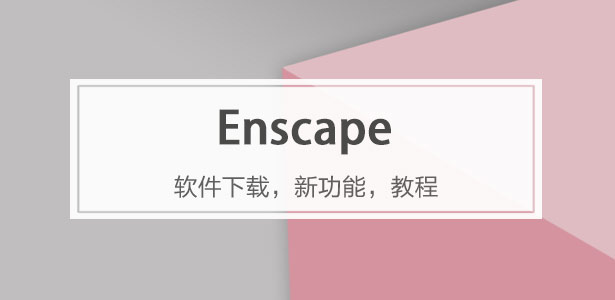
下載app免費領取會員







建筑設計單位 BUZZ莊子玉工作室
室內設計單位? 上海無間建筑設計有限公司
建筑施工圖? 上海如斯夫建筑設計有限公司
項目地點? 云南迪慶
建成時間? 2024年9月
建筑面積? 7300平方米
撰文? 莊子玉、王珊
梅里雪山群矗立于滇藏交界處,綿延150公里,由13座海拔超過5000米的雪峰接連而成,主峰卡瓦格博高度直指7000米。群山終年覆雪,山體呈現純凈的銀白色,融水匯入瀾滄江奔流而下,水霧攀升聚在河谷之上,云間雪峰時隱時現。
The Meri Snow Mountain stands at the border of Yunnan and Tibet, stretching 150 kilometers with 13 snow-capped peaks each exceeding 5,000 meters in elevation. Its main summit, Kawagarbo, soars to nearly 7,000 meters. The range is perpetually cloaked in pristine silver-white snow, its meltwater feeding into the roaring Lancang River below. As mist rises and gathers over the valleys, the snow-crowned peaks play hide-and-seek amidst the swirling clouds.
▲ 項目藝術微電影? ?是然建筑攝影

梅里泊度酒店位于梅里雪山東側霧濃頂觀景臺,身處3600米的高山,直面壯麗神圣的梅里十三峰,百里的連綿長卷在遠方徐徐展開;又背靠著白馬雪山,被兩座巍峨的雪山群環繞其間;端頭一側是高差數百米的深邃山谷,幾近垂直地落入德欽縣城。
The Poodom Deqin Meri Hotel is situated at the Wunongding Viewing Platform on the eastern side of the Meri Snow Mountain. Perched at 3,600 meters above sea level, it faces the majestic and sacred Thirteen Peaks of Meri, where a breathtaking hundred-mile panorama unfolds in the distance. Behind it stands the towering Baima Snow Mountain, embraced between two magnificent snow-capped ranges. At one end of the hotel lies a deep valley with a drop of several hundred meters, descending almost vertically down to Deqin County.


從霧濃頂望向梅里雪山,每日初升的太陽,光首先點亮卡瓦格博鋒利的山尖,在短時間內將雪山渡上一層桔金色……這是當地人眼中難得一見的神圣景觀,如同一場轉瞬即逝的金色盛典,是獲得神明護佑的吉祥之兆;這也是藏族人與卡瓦格博峰對話的純凈儀式,在此刻將個體生命與雪山連結,是藏族文化中人與自然共生的縮影。
Gazing at the Meri Snow Mountain from Wunongding, the first light of the rising sun touches the sharp summit of Kawagarbo, briefly cloaking the snow-capped peaks in a golden-orange hue... To the locals, this is a rare and sacred spectacle—a fleeting golden ceremony, an auspicious sign of divine blessing. It is also a pure ritual through which Tibetans commune with Kawagarbo, a moment that connects individual life to the sacred mountain. This embodies the Tibetan belief in the equality of all beings and the harmonious coexistence of humanity and nature.

兩側環繞住霧濃頂的雪山群所帶來的強烈感官沖擊,讓人和人造物忽而顯得十分渺小;終年覆蓋著皚皚白雪的崇山峻嶺,天然嵌合著一種強烈而神圣的空間張力,在這樣的自然環境中,任何夸張的建筑形式都會顯得過于繁雜和跳脫。
The towering snow-capped peaks encircling Wunongding deliver such overwhelming sensory power that both people and man-made structures suddenly appear insignificant. These majestic mountains, perpetually cloaked in pristine snow, inherently embody an intense, sacred spatial tension. Within such a natural context, any exaggerated architectural form would inevitably seem excessive and disruptive.


所以,酒店最終所呈現出的空間形態并非形式表現的追求,而是試圖構建人與自然鏈接的媒介,激發并放大來自場域的感染力所帶來的內在體驗;盡可能融入自然環境,隱退去自身的符號化表達,讓其理念深植于場地的物理空間和特有氣質,強調建筑作為自然與人文的媒介功能。
Thus, the spatial form ultimately manifested by Poodom Hotel is not a pursuit of formal expression, but rather an attempt to construct a medium connecting human with nature – one that amplifies and magnifies the profound inner experience evoked by the site's innate power. It strives to integrate seamlessly into the natural environment, consciously retreating from symbolic self-expression to root its concept deeply within the physical space and distinctive spirit of the location. This approach fundamentally emphasizes architecture's function as an intermediary between nature and human culture.


建筑以橫向延展的形態呼應山脈走向,以純凈色彩與材質融入藏地語境消解對原始景觀的侵擾,同時通過錯層與體塊扭轉,串聯從開放到私密的多維體驗、模糊室內外界限,讓建筑內部視線與光影不斷交織,打造出一個聚焦空間敘事的“垂直流動園林”。
The architecture echoes the mountain range's contours through horizontally extended forms, while its pure color palette and materiality blend seamlessly into the Tibetan context to minimize intrusion upon the pristine landscape. Through staggered levels and twisting volumes, it weaves together multidimensional experiences—from open to private spaces—blurring the boundaries between interior and exterior. Within this framework, sightlines and light interplay dynamically, creating a "vertically flowing garden" that centers on spatial storytelling.


設計將以體驗感為目的的空間營造手段,逐漸外化成一種既獨立又動態統一的流線,使得建筑與自然、室內與室外、近景與遠景之間形成無縫的連接,引導人在行進中感知自然的神性與場域精神,將居住行為轉化為個體與雪山的對話儀式。
The design gradually externalizes space-making techniques—originally aimed at creating experiential qualities—into an independent yet dynamically unified flow. This achieves seamless connections between architecture and nature, interior and exterior, near and distant views. Guiding occupants to perceive both the divine essence of nature and the spirit of place through movement, it transforms the act of dwelling into a ritualistic dialogue between the individual and the sacred mountain.


01
漂浮的體量
從香格里拉方向一路向上,穿過白馬雪山,卡瓦格博峰在山林間閃現。酒店探出山體的姿態,是到達霧濃頂景區的昭示,隨后梅里十三峰的真容赫然眼前。建筑以最簡單的幾何形態呈現,是BUZZ過往項目中少有的體量形式,但對于霧濃頂這塊場地卻是最適合的——這種極致的方形體塊最直接也最簡潔明確,既最大化了功能效率,也極盡可能減少了對自然場景的影響。
Ascending from the direction of Shangri-La, through the snow-capped Baima Mountain, the majestic peak of Kawagarbo emerges intermittently through the forest. The hotel juts out from the mountainside like a natural proclamation announcing one's arrival at the Wunongding scenic area, where the true grandeur of the Thirteen Peaks of Meri suddenly reveals itself in full splendor. The architecture presents itself in the simplest geometric form - a surprisingly restrained volumetric approach rarely seen in BUZZ's previous projects. Yet for this particular site at Wunongding, it proves to be the most appropriate solution. These radically square blocks achieve maximum clarity and directness, simultaneously optimizing functional efficiency while minimizing impact on the pristine natural landscape.



建筑拉長的線型體塊沿街伸展,既是對遠方連續山脈這一橫向關系的致意,也有意遮蔽了原開鑿西景線公路時對自然山體的破壞。靠近山谷的部分在水平方向扭轉出不同的角度,如手持的轉輪留下瞬間的動勢,建筑空間隨之產生戲劇性的變化,形成在垂直方向堆疊的體驗“島嶼”,各層間的錯位擠壓出不同的畫面,也讓內部觀看雪山的角度產生更有指向性的具體內容。
The elongated linear volume of the building stretches along the street, paying homage to the horizontal continuity of distant mountain ranges while intentionally screening the scars left by the excavation of the West Scenic Route highway on the natural slopes. Where it approaches the valley, the structure twists at varying angles in the horizontal plane—like the fleeting motion of a spinning prayer wheel—creating dramatic spatial transformations. This forms vertically stacked experiential "islands," where the offset between levels composes distinct framed views. The displacement also directs the interior sightlines toward the snow-capped peaks with purposeful specificity, transforming each vantage point into a curated encounter with the sacred mountains.


立面材料的應用也盡可能與場地相結合。底座部分選擇了當地的片石為材料,與自然山體緊密相連;碎石隱匿了山體的高差,樹起客房用來遮擋公路視線的庭院,包裹起前場起伏的片墻,圍出端頭平靜的水面。
The application of facade materials is meticulously integrated with the site context. the base section utilizes local slate stone, seamlessly connecting with the natural mountain terrain. Gravel embankments subtly conceal elevation changes while establishing guest room courtyards that shield against road visibility. These undulating slate walls envelop the front area, ultimately framing a tranquil water surface at the terminus.



它讓主入口變得神秘而有洞穴般的探索感,并將周圍景觀一并納入酒店范圍,構建出與前場三角區錯落統一的聯結,也柔化了建筑和公路交通之間的硬性關系,最后向上延伸至二層扭轉的露臺,整合出一個有活力的“內容基底”。
The design transforms the main entrance into a mysterious, cave-like space that invites exploration, while seamlessly incorporating the surrounding landscape into the hotel's domain. It creates a staggered yet unified connection with the triangular forecourt area, softening the rigid relationship between the architecture and the adjacent roadway. Finally, the composition ascends to the twisted terrace on the second floor, integrating all elements into a vibrant foundational experience.

底層建筑如從景觀中自然生長出來,但又不像地景建筑一樣完全消失在景觀里。故此,上部采用了貼近藏族傳統民居和寺院的白色涂料,以最純凈的顏色呼應了遠山,漸入自然背景。橫向的形態和輕盈的顏色,讓上層更具漂浮感,也與底層形成強烈的對比關系。
The base structure appears to emerge organically from the landscape, yet unlike earth-sheltered architecture, it doesn't completely disappear into its surroundings. Therefore, the upper section adopts white plaster reminiscent of traditional Tibetan dwellings and monasteries. This purest of colors echoes the distant mountains, gradually blending into the natural backdrop. The horizontal form and light-toned treatment give the upper level a sense of floating, while creating a striking contrast with the base.


遠看像一個純凈的白色體塊伏在自然的基底之上,近看又具有極強的幾何感,是對于自然的一種內生化的張力表達。立面的白色涂裝和石材又巧妙地延續進室內,使建筑內外視覺上更加和諧統一。
From afar, it appears as a pristine white volume resting gently upon the natural foundation, while up close, it reveals striking geometric precision - an internalized expression of nature's inherent tension. The white facade treatment and stone materials extend seamlessly into the interior spaces, achieving visual harmony and unity between the building's exterior and interior.

02
垂直的立體園林
從洞穴一般的入口進入酒店,沿曲折的小徑路過卡瓦格博峰落在水面的倒影,轉進室內空間。酒店大堂半埋入景觀以下,開闊的整面玻璃被推到室外水池盡端,水面被框入大堂的前景,從室內能平行望向梅里雪山在池水中的雙重鏡像。
Stepping through the cave-like entrance of the hotel, visitors follow a winding path past the reflection of Kawagarbo Peak shimmering on the water's surface before transitioning into the interior spaces. The hotel lobby is partially sunken below the landscape, where expansive floor-to-ceiling glass extends to the edge of an outdoor pool. This carefully framed water surface becomes the lobby's foreground, allowing guests to gaze horizontally at the double reflection of Meili Snow Mountain mirrored perfectly in the pool - a breathtaking dialogue between architecture and nature.




中庭由一個向上盤旋的樓梯串聯,通高的部分直指頂層,自然光從屋頂的開窗傾斜而下,光化作神圣的載體垂直穿透建筑,打在首層的水面上。頂部的天光照亮墻壁,燭臺的光暈和影子同時落下,傍晚夕陽的余輝穿過空隙,在白墻上留下冷暖相應的色彩。
The atrium is anchored by a spiraling staircase that ascends to a double-height void reaching skyward. Sunlight pours through rooftop clerestories, transforming into a luminous medium that pierces vertically through the architecture before alighting upon the ground-level water feature. Above, the zenithal glow washes over walls as candle sconces cast undulating shadows—while at dusk, the fading sunset filters through apertures, imprinting the white surfaces with an interplay of warm and cool hues.



從大堂、餐廳、茶室、酒廊到頂層冥想空間,各層公共區域環繞中庭向上排布。沿著步梯向上,視線也隨著步梯方向旋轉變化,洞口慢慢遷移,視線不斷與公共空間的片段交錯,在垂直和水平向的流動變化之中,視線交織著光影的變換形成了有趣的連續界面和一系列體驗的關聯,使整個公共區域在保持各自獨立狀態下又多了一重動態的統一。
From the lobby, restaurant, tearoom, and lounge to the top-floor meditation space, each level's public areas ascend vertically around the central atrium. As one climbs the staircase, their gaze rotates in sync with its spiral motion—openings gradually shift, sightlines intermittently intersect with fragments of communal spaces. Within this choreography of vertical and horizontal flows, the interplay of visual perspectives and transforming light creates a captivating continuous interface and a series of experiential connections. This imbues the entire public realm with a dynamic unity while preserving each space's distinct autonomy.



步梯和一系列的墻體轉換,使中庭的水平視線關系由底層最開闊的連通,向上逐漸收縮,像風化千年的石窟,散落著大小不一的洞口。開洞的逐漸收縮,也讓通過關系變成駐足凝視。這種以傳統石窟為體驗原型的串聯空間,讓公共區域像一座垂直的園林,動線和視線皆在其中任意游走。
The staircase and a series of transforming walls modulate the atrium's horizontal sightlines—from the completely open connection at ground level to progressively constricted views ascending upward, resembling a millennia-weathered grotto scattered with variably sized openings. The gradual narrowing of apertures transforms passageways into moments of contemplative pause. This vertically linked space, inspired by the experiential essence of traditional cave temples, renders the public areas as a vertical garden where both circulation paths and visual trajectories meander freely.



內部的洞口和立面的開窗保持同樣的互動:是看,也是被看;既是展示,也是游走。它們讓行走和觀看的體驗感交相呼應,反復穿插。這種層層遞進的體驗關系,和觀看梅里雪山有著相似的方式:從遠觀百里長卷慢慢轉換到凝視鋒利的山尖,目光由大到小,由遠及近,由深及淺,又由淺及深,層次豐富而充滿秩序,是逐漸由外擴轉向內在的不斷探索的過程。
The interior apertures and facade windows maintain the same dual interplay: to see and be seen; to display and to wander. They orchestrate a reciprocal echo between movement and observation, their interactions recurring in rhythmic alternation. This progressively layered experiential relationship mirrors the very manner of viewing Meri Snow Mountain—transitioning gradually from contemplating its hundred-mile panorama to focusing on its razor-sharp summit. The gaze shifts from macro to micro, distant to proximate, deep to shallow then back again, creating richly ordered perceptual strata. It becomes an exploratory journey that turns inward even as it expands outward—a continuous oscillation between external grandeur and internal revelation.




整體設計也強調建筑內外空間的多元互動,盡管建筑體塊本身方正,但公共空間和露臺的緊密聯絡,讓人們可以在室內外間自由穿梭,享受小景觀與大自然之間的切換,在不同的視角下看待同一景別所帶來的不同觀感,也是對梅里雪山不同視角和體驗態度的尊重。
The overall design emphasizes multifaceted interactions between interior and exterior spaces. Despite the building's orthogonal massing, the seamless integration of public areas and terraces allows fluid transitions between indoors and outdoors. This enables visitors to alternate between intimate micro-landscapes and the vast natural scenery, experiencing diverse perspectives of the same view—a deliberate homage to Meri Snow Mountain's myriad visual and experiential dimensions.

03
體驗的島嶼
一層餐廳部分從入口至陽臺逐級下躍,露臺正對的位置是斜率最大的山谷,谷底是線狀排列的德欽縣城。這種逐級下躍的分層呼應了視線往下看的懸崖的角度,形成更大的視線縱深和更廣的觀景視野。室外山谷的落差被接入到室內的行走軌跡之中,形成了內外空間的無縫連接,也使得室內擁有了同樣強烈的場地特質。
The restaurant on the ground level descends in cascading tiers from the entrance to the balcony, where the terrace directly faces the steepest slope of the valley. At the valley bottom lies Deqin County town, linearly arranged along the terrain. This terraced descent mirrors the cliff's downward viewing angle, creating greater visual depth and broader scenic vistas. The dramatic elevation change of the outdoor valley becomes integrated into the indoor circulation path, achieving seamless spatial continuity between interior and exterior. This design approach endows the interior spaces with equally powerful site-specific qualities as the natural landscape.


二層圍繞中庭布置了三間面積和開放程度不等的茶室,也用作獨立的包廂,走廊盡端是酒店內第二處鏡面水池。橫向打開最大一間茶室的窗,探身可以直接觸到平靜的水面,包廂也變作一個和室外直接聯通的空間。
The second-floor features three tea rooms of varying sizes and degrees of openness arranged around the central atrium, which also function as private dining spaces. At the end of the corridor lies the hotel's second reflecting pool. When the window of the largest tea room is opened horizontally, one can lean out to touch the still water surface directly, transforming the private room into a space seamlessly connected with the outdoors.


水池夾在兩個巨大的出挑的體塊之間,層高有意被壓的很低,像兩塊巨大巖石中間的夾縫,梅里十三峰在此處被壓縮進一副橫軸的山水長卷,鋪在望向遠方的視野之中。
The water feature is wedged between two dramatically cantilevered volumes, with intentionally compressed ceiling height creating a geological fissure-like space between what appear as massive rock formations. Here, the Thirteen Peaks of Meri are condensed into a horizontal scroll painting of mountainscapes, unfurling across one's field of vision toward the distant horizon.



三層的酒廊聯通頂層形成一個通高空間,一圈回廊環繞在酒廊上空,外部對應水池上方出挑的空間。整個體塊可以被看作一個美術館系統:由一個獨立的多功能復合運營空間,嵌套若干個展廳。層間的扭轉在上下兩層間和中庭間形成了戲劇性的對話關系,從回廊的開洞能往下看穿中庭里跳動的燭火,水面偶爾震蕩出的波紋……
The third-floor lounge connects vertically with the top level to form a double-height space, encircled by an overhead gallery that corresponds externally to the cantilevered volume above the water feature. The entire composition functions as a gallery system - an independent multifunctional operational space containing nested exhibition chambers. The twisted interfloor geometry creates dramatic dialogues between adjacent levels and the central atrium. Through openings in the gallery, one gazes downward to witness flickering candlelight in the atrium and occasional ripples trembling across the water's surface...


酒店內最大面積的落地窗基本集中在這一空間內,一側開窗直面梅里雪山,另一側吧臺正對山谷,與對面的山峰相望,抬頭能看見山間公路上往來飛來寺方向的車輛。這些橫向的大面積觀景界面也形成了在頂層開放空間內以雪山為底景的室內外視線間的交錯和平移,在視覺上重構了內外空間的對話關系。
The hotel's most expansive floor-to-ceiling windows are concentrated in this space. On one side, the windows open directly toward the Meri Snow Mountain range, while on the opposite side, the bar counter faces the valley in a visual dialogue with the distant peaks. Glancing upward, one can see vehicles traveling along the mountain road toward the Feilai Temple. These sweeping horizontal viewing planes create intersecting and panning sightlines within the top-floor open space, with the snow-capped mountains serving as a majestic backdrop. This visually reconstructs the conversational relationship between interior and exterior spaces, transforming the architectural experience into a dynamic interplay of perspectives.


和其他空間相比,頂層給人的體驗更多的是強烈的包裹感。面積最大的是位于端頭的冥想空間,這一處幾乎是全封閉的狀態,沒有直觀的窗景,唯天光從傾斜的墻面上鋪灑下來。這里可以安靜地打坐,聽到的僅有頌缽發出的嗡鳴。
In contrast to other spaces, the top floor offers an intensely cocooned experience. Dominating the terminus is the meditation chamber - the largest yet most enclosed space, deliberately devoid of direct windows. Here, daylight descends obliquely along slanted walls in diffuse illumination. The silent space accommodates undisturbed contemplation, where the only audible presence is the resonant hum of singing bowls vibrating through the rarefied air.


與冥想空間聯通的是一處半室外的走廊,從立面上就能看到一個個大小不一的不規則空隙,廊的另一側是一個個適合獨處的龕,可以安靜坐下,看夕陽透進孔隙在墻上打出移動的斑痕。
Adjacent to the meditation space lies a semi-outdoor corridor, its facade punctuated by irregularly sized openings of varying dimensions. The opposite side of the passage features a series of intimate alcoves designed for solitary contemplation. Here, one may sit quietly and observe the setting sun casting ever-shifting patterns of light through the perforations, as mobile shadows play across the textured walls.



沿樓梯登至頂層露臺,能體驗到的是一種完全擁抱自然的環境:來自梅里十三峰的視覺沖擊力,在建筑高度的支撐下被放大;環繞的無邊水池讓環境變得更寧靜,一切變成對眼前壯觀景象的體驗支撐,對自然的敬畏自然也變得更加強烈。相對室內空間,露臺是場地凈化后的體驗容器,以激發出人自身的內觀狀態,更關注于內在的覺醒而生出與純凈自然對話的內生化的內容。
Ascending to the rooftop terrace via the staircase, one enters an environment of complete immersion in nature. The visual impact of the Thirteen Peaks of Meili becomes magnified by the building's elevated vantage point, while the surrounding infinity pool enhances the serenity of the setting. Every element transforms into a support system for experiencing the majestic panorama, intensifying one's awe of nature. Unlike the interior spaces, the terrace serves as a purified vessel for site-specific experience—designed to evoke inner contemplation. Here, the focus shifts inward, fostering a heightened state of self-awareness that gives rise to an organic dialogue with the pristine natural world.

不同于在城市里所做建筑,泊度酒店有一套變化豐富且過渡流暢的立面系統,大面積的開窗,可觸碰的在地化材料,介于室內外空間的半鏤空走廊,到僅有縫隙透光的全封閉展廳,整個系統是一個良好的完整維護體系。
Unlike urban architecture, Poodom Hotel features a richly varied yet seamlessly integrated facade system. Expansive windows, locally sourced tactile materials, semi-permeable corridors bridging indoor and outdoor spaces, and completely enclosed exhibition areas with only slivers of light—together they form a cohesive and well-balanced protective envelope.


立面洞口的豐富變化讓人可以更干凈純粹的和場景發生對話。框景內容的層層疊加,讓人的觀感體驗形成一個慢慢累積和放大的過程,與山體的沉淀關系相呼應,具有一種不斷堆疊的地質學或考古學的體驗。
The facade's intricately varied openings facilitate a distilled dialogue with the surrounding landscape. Through layered framing of vistas, the perceptual experience becomes an accumulative crescendo—echoing the mountain's geological sedimentation while evoking an almost archaeological sense of stratified discovery.


04
朝圣者的庵堂
酒店共計35間客房,均沿走廊單向布置,每間客房均直面雪山,與立面之間形成一個傾斜的夾角。客房的扭轉,同時也在走廊一側形成一個轉角空間,讓每間客房擁有了屬于自身的停留區,也打破了通廊的單調統一。
The Poodom Hotel features 35 guest rooms, all arranged unilaterally along the corridor with each unit directly facing the snow-capped mountains at a tilted angle to the facade. This deliberate rotation of rooms simultaneously creates corner spaces along the hallway, endowing each accommodation with its own distinctive waiting area while breaking the corridor's monotonous uniformity.


酒店背靠山體的一側,則通過開窗設計與山體之間建立聯系和對話。大的洞口能容一人坐入其中,山的堅固折成向外望去的背景;小的洞口將光帶入走廊向前的步履之間,也刻畫出立面的節奏感。
On the mountainside elevation, the hotel engages in a dynamic dialogue with the terrain through deliberate window apertures. Generous openings—each sized to cradle a seated observer—transform the mountain's mass into a monumental vista. Smaller fenestrations channel daylight rhythmically along the corridor's progression while articulating the facade's tectonic cadence.



清晨,隨著室內窗簾向上抬起,梅里雪山成為每間客房壯闊的底景。窗外觀景臺上白色的桑煙升起,五色經幡抖出沙沙的聲響,空氣中彌散著燃燒后青稞和香柏的味道;遠處山澗騰起的云霧,掠過飛來寺的金頂,隨著山風緩緩飄移。客房如同朝圣者的庵堂,在獨屬于自我的一方天地中,純粹而直接地對話雪山,安靜地直面自我。
At dawn, as the interior curtains ascend, the Meri Snow Mountain emerges as a majestic backdrop in every guest room. Outside the windows, white juniper smoke rises from viewing platforms, while five-colored prayer flags flutter with a rustling whisper, saturating the air with the scent of burnt barley and cedar. In the distance, mist curls up from mountain streams, brushes past the golden roof of Feilai Temple, and drifts slowly with the alpine wind. Each room becomes like a pilgrim's hermitage—within this private sanctuary, one engages in pure, direct dialogue with the sacred peaks while quietly confronting one's inner self.



房間內靠近窗的一側抬高一步,長榻和幾案靠窗布置,泡池藏在靠墻的一邊。坐、臥、躺,亦或是身在泡池之中,室內變化的高差是觀看雪山不同的角度。室外三角區是每個房間獨立的露臺,露臺略低于室內地面,向下的一步更是靠近自然的儀式感。
The window-side area of each room is elevated by one step, featuring a daybed and low table arranged near the glass. The soaking tub nestles against the wall. Whether sitting, reclining, lying down, or immersed in the tub, the varied interior levels create distinct vantage points for viewing the snow mountains. Outside, each room's private triangular terrace sits slightly below the interior floor level—this deliberate downward step heightens the ritualistic connection with nature.

無論是客房或是公區,酒店的室內外設置都盡可能以聯通便捷為原則。霧濃頂海拔甚高,最高溫保持在20多度,能望見梅里的最好時節又是每年干燥的冬季,山風凜冽,氣溫低至冰點。所以,酒店內甚少有空間開闊的大面積露臺,卻讓每個空間都擁有獨屬于自己的室外區域,讓人能隨時在室內外自由穿行,既可看到開闊的雪山美景,又能隨時返回溫暖的房間內。
Whether in guest rooms or public areas, Poodom Hotel's indoor-outdoor configurations prioritize seamless connectivity. At this high altitude, temperatures rarely exceed 20°C, and the optimal viewing period for Meri Snow Mountain falls during the arid winter months when biting mountain winds plunge temperatures below freezing. Consequently, the hotel intentionally avoids expansive open terraces, instead equipping each space with its own private outdoor zone. This design allows guests to move freely between environments—experiencing panoramic snow mountain vistas while maintaining instant access to warmth and shelter.


在BUZZ看來,酒店不僅僅是一個提供住宿的空間,更是一種體驗的載體,以表達一種與自然和諧共處的生活態度。故此,泊度酒店的設計不僅是基于極端氣候場地技術性的探索,更是對具有強烈在地性和宗教意味場地精神的再解讀。它以“消隱”為起點,在藏地神山與人類棲居之間構建一種克制的對話關系,不再炫耀對自然的征服,而是以沉靜的姿態證明共生的可能。
To BUZZ, the hotel transcends mere accommodation—it becomes a vessel for experiences that embody a philosophy of harmonious coexistence with nature. Thus, the design of Poodom Hotel represents not just technical adaptation to extreme climates, but a profound reinterpretation of a site rich in local spirituality and religious significance. Beginning with the concept of "dissolution," it establishes a restrained dialogue between Tibet's sacred peaks and human habitation. Here, architecture no longer flaunts dominion over nature, but through its silent presence, demonstrates the possibility of symbiotic existence.



它又像是一個個體驗片段的聚合體,將建筑以“畫框”的形式呈現,成為自然景觀的“容器”,讓人在內部以不同角度觀看雪山、體驗雪山。它的變化正如雪山的變化,時隱時現、時明時暗,按時間和季節更換著不同的表情,既是多變的,又是永恒的。
The hotel emerges as an aggregate of experiential fragments—each architectural element framing nature like a living canvas, collectively forming a "vessel" for the mountain landscape. Within this container, guests encounter the snow-capped peaks through ever-shifting perspectives. Like the mountain's own metamorphoses, the architecture alternates between presence and disappearance, brightness and shadow, its expressions transforming with time and seasons. This is a space of perpetual mutability yet enduring constancy, where transience and eternity coexist.

所以,泊度酒店是一種超越形式主義的體驗載體,讓空間不僅是物理上的存在,更是視覺和情感上的聯結,給遠道而來的人創造了一方天地、一組視角,讓人放松下來對話自己、對話自然,在體驗中感受到梅里雪山的精神。
Thus, the hotel transcends formalism to become a vessel of profound experiences—where space exists not merely as physical matter, but as visual and emotional connections. It creates both a sanctuary and multiple perspectives for pilgrims from afar, inviting them to unwind into dialogues with themselves and with nature. Through these layered encounters, guests ultimately perceive the very spirit of Meri Snow Mountain.

完整項目信息
項目地點:云南迪慶
建筑面積:7300平方米
設計時間:2021年5月
建成時間:2024年9月
業主單位:德欽梅里泊度酒店管理有限公司
建筑設計單位:BUZZ莊子玉工作室
項目主創:莊子玉,戚征東,楊曄
設計團隊:文雅,彭川倪,梁丹,左天源,章一平
建筑施工圖:上海如斯夫建筑設計有限公司
施工單位:廣東傳奧建設工程有限公司
室內設計單位:上海無間建筑設計有限公司
精裝施工單位:廣東傳奧建設工程有限公司
景觀設計單位:MIND邁德景觀
照明顧問:LIHuo離火照明設計(重慶)有限公司
幕墻顧問:楷宴建筑咨詢(上海)有限公司
VI 視覺設計團隊:hesign
建筑攝影:蘇圣亮,朱雨蒙,如你所見-王廳,德欽梅里泊度酒店
視頻團隊:是然建筑攝影
模型制作:密克羅模型設計(北京)有限公司
出品圖制作:高藝乘,許云鵬,星夢釗,徐雅涵,何靜,張鳳儀
撰文:莊子玉,王珊
版權聲明:本文由BUZZ莊子玉工作室授權發布。歡迎轉發,禁止以有方編輯版本轉載。
投稿郵箱:media@archiposition.com
本文版權歸腿腿教學網及原創作者所有,未經授權,謝絕轉載。

上一篇:政策新聞 | 循環利用再生水 ??綠色發展更美好??淮北市排水公司開展全國城市節約用水宣傳周活動
下一篇:BIM建筑|gmp改造類新作:購物中心變辦公綜合體,北京京印國際中心






推薦專題
- BIM建筑|2025密斯青年人獎青睞哪些畢業設計?17組決賽作品公布
- BIM建筑|倫敦德意志銀行新總部,21 Moorfields / WilkinsonEyre
- BIM建筑|建成三十年,工業美學的再造與升級:K?i?ík展館改造 / 布拉格展覽中心
- 建筑賞析|87米云端的革命回響——一座會“講故事”的紀念高塔
- BIM建筑|深圳后海“地王”公開招標優勝方案:line+朱培棟,構建高密度城市“生境范式”
- 建筑賞析|解碼順德良村汽配城如何重構汽車產業新生態,破局粵港澳大灣區
- BIM建筑|F.O.G.新作:Lemaire成都太古里精品店
- BIM建筑|gmp改造類新作:購物中心變辦公綜合體,北京京印國際中心
- BIM建筑|莊子玉BUZZ新作:觀雪山的場所,梅里泊度酒店
- 建筑賞析|又沁杭州心|杭州綠城·潤百合



































